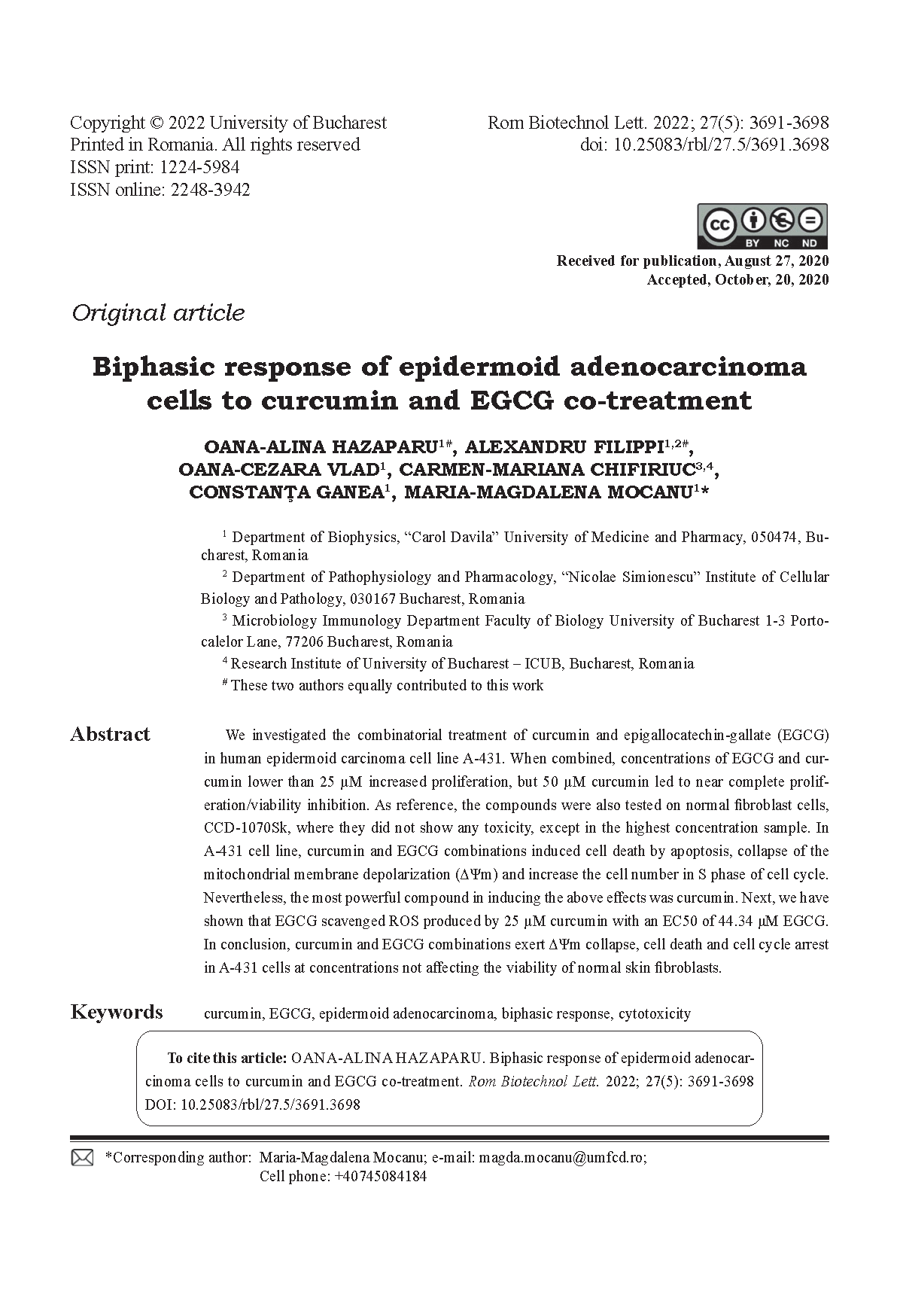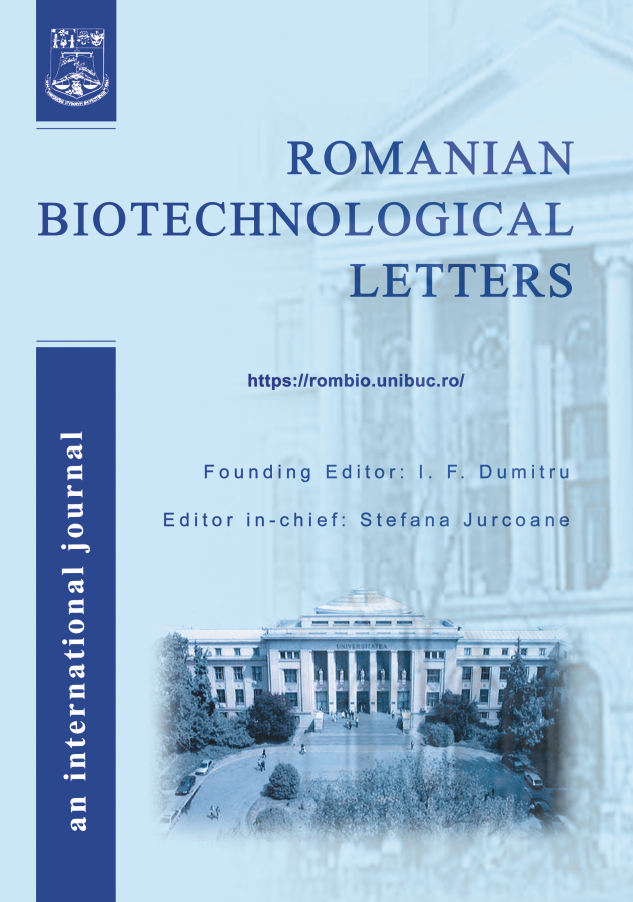Biphasic response of epidermoid adenocarcinoma cells to curcumin and EGCG co-treatment
DOI:
https://doi.org/10.25083/rbl/27.5/3691.3698Cuvinte cheie:
curcumin, EGCG, epidermoid adenocarcinoma, biphasic response, cytotoxicityRezumat
We investigated the combinatorial treatment of curcumin and epigallocatechin-gallate (EGCG) in human epidermoid carcinoma cell line A-431. When combined, concentrations of EGCG and curcumin lower than 25 μM increased proliferation, but 50 μM curcumin led to near complete proliferation/viability inhibition. As reference, the compounds were CCD-1070Sk, where they did not show any toxicity, except in the highest concentration sample. In A-431 cell line, curcumin and EGCG combinations induced cell death by apoptosis, collapse of thee also tested on normal FIbroblast cells, mitochondrial membrane depolarization (ΔΨm) and increase the cell number in S phase of cell cycle.
Nevertheless, the most powerful compound in inducing the above effects was curcumin. Next, we have shown that EGCG scavenged ROS produced by 25 μM curcumin with an EC50 of 44.34 μM EGCG.
In conclusion, curcumin and EGCG combinations exert ΔΨm collapse, cell death and cell cycle arrest in A-431 cells at concentrations not affecting the viability of normal skin fibroblasts.





